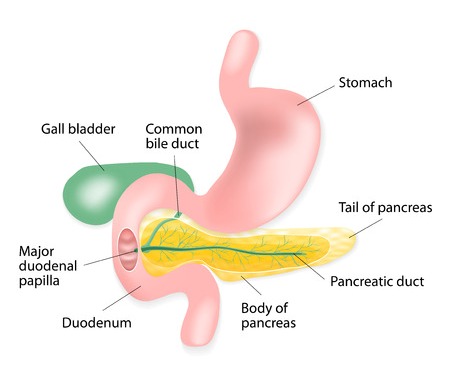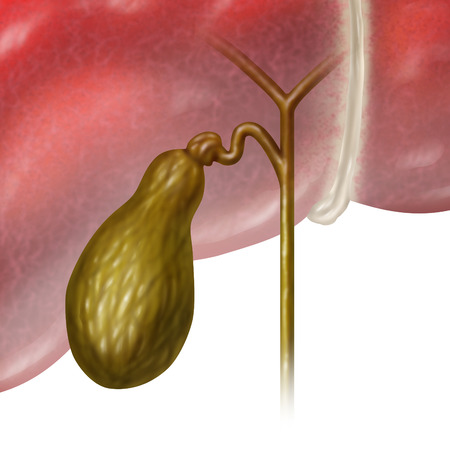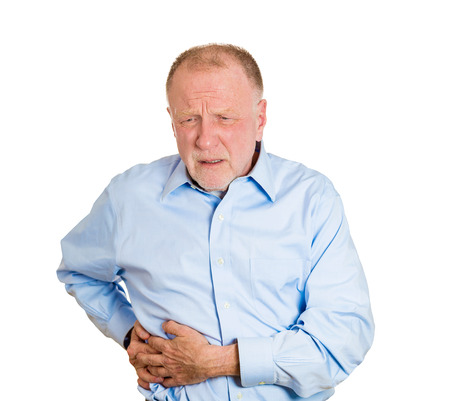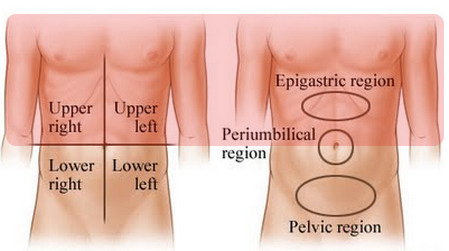We have studied in our Science books about gallbladder but do you really know where your gallbladder is? Or what are its functions? Only few of us, who are doctors, book worms or patients suffering from gall bladder complications would know about it. Well, when it hurts or if there are any gallbladder issues, it is only then that we deepen our knowledge about it.
What is Gallbladder?
Gallbladder is one of those internal organs about which we do not think much. It is that small organ that stores the bile juice, which plays an important role in food digestion.

Where is your Gallbladder?
The gallbladder location is in right upper quadrant of abdomen and below the liver. It is about 4 inches in size, connected with the liver and has an oblong or pear shape. If there’s any complication, the person would feel a pain right below the ribs section in the body.
Gallbladder and its Functions
Gallbladder is an important organ of the body. It stores bile juice which breaks down the food we eat, especially helping in the digestion of fats. It is a part of the biliary system and acts as a storage reservoir for the bile. However, it does not produce the bile juice, but just stores it when it is not required. Bile is produced by the liver which passes through the bile duct and then into the gallbladder where it is accumulated for the future use. Further from there, the bile passes into the small intestine to break the food particles.

Gallbladder surgery – Body without the Gallbladder
When the gallbladder functions are interrupted and is painful, gallbladder removal has to be considered. However, there is nothing much to worry, as your body can do its functions normally without the gallbladder as well. People who have undergone gallbladder surgery have rarely faced any issues in the functions of their biliary system.
When the gallbladder is removed, the body adjusts its extra bile juice in the bile ducts, which allows it further from liver to the small intestines.
The Gallbladder risks
One of the most common gallbladder disease or the problem suffered by people is that of gallbladder stones, also called as gallstones. Gallstones are the tiny stone like formations that get formed due to the accumulation of dried bile and cholesterol. What causes gallstones? The excess of bilirubin and cholesterol in the bile or low concentration of bile salts are the basic reasons for gallstones. The gallstone symptoms are as follows:
- Stops the regular flow of bile from gallbladder to small intestine.
- Gallstones causes severe pain especially when you eat oily and fatty foods.
- It can ignite Jaundice
- It creates irritation and inflammation of the gallbladder walls.
The other Gallbladder attack symptoms can be these:
- The gallbladder cancer
- The perforation of the gall bladder
- If required amount of blood flow is stopped or disturbed, then chances of Gangrene may arise.
- The symptoms of gallstones can also be having pancreatitis which is caused by the gallstones blocking the duct.
- If a gallstone is passed into the intestine, it creates a bowel obstruction.

Gallbladder Symptoms & Warning Signs
- Extreme abdominal pain
- Severe pain that extends from beneath your right shoulder to your back
- Severe pain which intensifies after meal, specifically after eating oily or fatty foods
- Severe pain which feels like sharp or dull cramps
- Body pain which increases with your breathing (particularly while deep breathing)
- Angina chest pain
- Vomiting, fever and nausea
- Feeling full in the abdomen despite of less food consumption
- Excessive gas, indigestion and heartburn
- Chills along with shaking of body
- Tenderness in the upper right quadrant of your abdomen
- Unusual color of stool (clay like color)
- Jaundice (yellowness in the eyes and skin)
Symptoms of gallbladder problems may not cause any pain but that does not mean one has to neglect it. If there’s a pain in your upper right abdomen after eating fatty, greasy foods, think about your gallbladder. Do consult your doctor and check for your gallstones treatment.
Gallbladder Diet
Post the gallbladder surgery, patients have to be extra careful with their diet. Here are things you should be cautious about.
For post-surgery patients in hospital: You will be provided a liquid diet which will slowly be transitioned into solid food, based on your recovery.
For patients recovering at home: Liquid food, particularly broth are initially introduced. Slowly as you recover, other food will be introduced.
For patients feeling nausea: Once the nausea reduces, solid foods are introduced into your everyday diet.
Food You Need to Avoid Post Surgery
High fat foods are a big no-no post surgery. These food items include:
- French fries, chips or any other fried food.
- Meats with high-fat, beef, ribs, bologna, bacon, sausage
- Creamy dairy products like sour cream, whole milk, ice-creams and cheese
- Food items with butter or made using lard
- Cream based sauces and soups
- Chocolates
- Turkey or chicken skin
- Coconut oil, palm oil, etc.
- Pizza
Consulting a dietitian after your surgery can also prove to be of great help. A dietitian will brief you about the various foods, fruits, vegetables and legumes that you can eat and the ones that you need to avoid. Also, don’t fall into the trap of alternative medicines and treatments which spread like a wildfire across the web. Gallbladder cleanse is one such alternative treatment which should be avoided.

